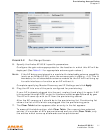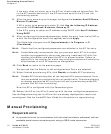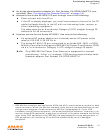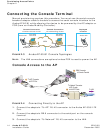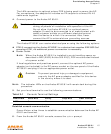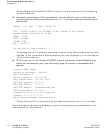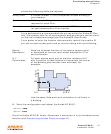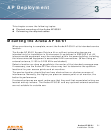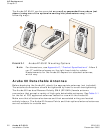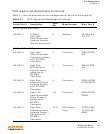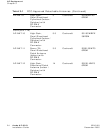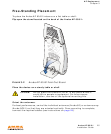Provisioning Access Points
Chapter 2
18 Aruba AP 60/61 0500160
Installation Guide December 2005
NOTE: The master and serverip environment variables also affect how
source files are selected and should be cleared when using this
approach. To clear a variable, enter the setenv variable command with
no host or address value.
When finished, proceed to Step 2.
z My network uses direct IP addresses instead of DNS.
If using direct IP addresses in your network, use the following
commands:
N
OTE: If the servername variable is configured in this scenario, it will be
ignored.
2. Specify an IP address for a specific AP, if necessary.
If using DHCP, the AP will obtain its IP address automatically and you can
skip this step. Otherwise, configure the AP with a static IP address using the
following commands:
3. Set the location for the specific AP, if necessary.
Location settings depend on how much control you want over configuring
logical groups of APs in the future.
z Default Locations
If you wish all APs treated as a single entity for configuration and
accounting purposes, you can use the default location profile
(255.255.65535) and skip to Step 4.
N
OTE: If using default locations during initial provisioning, you can later
reconfigure the APs to use specific location IDs using the Aruba
Mobility Controller management tools.
z Specific Locations
By setting specific location IDs for each AP, you can later apply
configuration changes or collect statistics and information for specific
groups of APs (for example, all APs on a particular floor in a particular
building).
To set a specific location for an individual AP, the following command is
used:
setenv location <building number>.<floor number>.<device number>
apboot> setenv serverip
<Mobility Controller IP address>
apboot> setenv master
<Mobility Controller IP address>
apboot> setenv ipaddr
<static IP address for the AP>
apboot> setenv netmask
<static IP address mask>
apboot> setenv gatewayip
<default gateway IP address>




